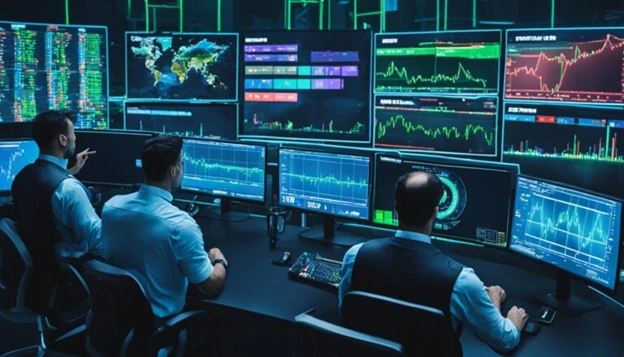Build & Backtest: How Simulators Help Institutional Traders Refine Strategies
By: Sensa Team
Posted: Aug-06-2025
One thing you must have always noticed in the stock market and trading is that whatever professionals are there in this field, those who do large-scale trades, they always move one step ahead of the market.
No, neither do they guess nor do they believe in any special forecasting. They make strategies, test those strategies in the market, gain experience, and then invest their money in the market.
In this digital market where AI is carving out its own niche, trading simulators are one of the most powerful tools institutional traders use. These platforms are useful. Enhancing and testing strategies is crucial for clearing the market before using real funds. real funds.
Whether you’re trying to learn to trade options, develop your own stock option trading strategies, or just want to make better trades, simulators can help you, too.
Let’s take a closer look at how simulators are changing the way professionals trade and how you can start using the same tools to your advantage.
Could you please explain why testing strategies are so important?
Institutional investors handle millions and billions of dollars to invest in the market. In this case, they cannot invest money in the market to experiment with any strategy. Every strategy must be tested using historical data and real market conditions before going live.
That’s where trading simulators come in. These platforms allow traders to:
- Design strategies based on data and market logic
- Test those strategies using past market behavior.
- Fine-tune them before using real money.
This process helps reduce risk, improve performance, and build confidence in the strategy.
What Is a Trading Simulator?
A trading simulator is like a flying simulator for traders. While they learn and try new things, they may practice in a safe setting. You’re not really flying; you’re just testing trades with data from markets that have already happened or are happening now.
You can set up trades, run simulations, see outcomes, and adjust the logic behind your decisions—without losing a single rupee or dollar.
Some simulators are quite advanced. Platforms like uTrade’s AI Strategy Builder allow traders to build, backtest, and deploy strategies in just minutes.
And this isn’t only about stocks—it includes options trading, forex, futures, and more.
How Institutional Traders Use Simulators?
Let’s break down how professionals use simulators in their daily trading work.
1. They Build Based on Institutional Investment Data
Large firms have access to massive amounts of institutional investment data—order flows, volume trends, economic indicators, and more.
Using this data, traders build logic-based strategies such as:
- Buy when a stock drops below a certain level and volume spikes
- Sell when volatility increases after earnings reports.
- Adjust positions based on time decay in options.
Simulators let traders test these tactics against past patterns to evaluate how they would have done in real markets.
2. They Backtest Without Risk
Backtesting is the process of comparing a strategy to historical market data to see how well it would have worked in the past. This is done after the strategy has been created.
This gives solutions to critical questions like:
- Would the strategy have made money last year?
- How much would it have lost during market dips?
- Was the return consistent?
If the results are bad, traders tweak the plan and try again—before risking a single penny.
3. They Deploy Only What Works
They use all the same methods as before and experiment with different methods in the market. Whichever method gives fruitful results is used by a doctor in practice. This step-by-step method will help you stay cool while you trade, make decisions based on facts instead of feelings, and build your confidence over time.
What does this mean for you as a Retail Trader?
If you’re looking to learn to trade options, explore stock option trading strategies, or just get better at making trades, simulators can help you:
- Trade without any risk to your money.
- Learn how different methods work in different markets.
- Don’t base your choices on feelings or guesses.
- Test ideas over years of historical data in just a few minutes.
There are many platforms that offer free or low-cost simulators for retail traders, such as students, part-time investors, or anybody else who is interested in algorithmic trading. These simulators can be quite helpful.
Conclusion
In business these days, you can’t just guess. The greatest traders, especially those who work for huge corporations, use trading models to test out every move they want to make.
You’re giving yourself a big advantage in the market by knowing how to backtest and improve your strategies. You will make fewer judgments based on your feelings, lower your risks, and start trading with confidence.
Using a simulator helps you connect what you learn in theory with what you do in practice, whether you’re making complicated algorithms or just attempting to learn how to trade options.